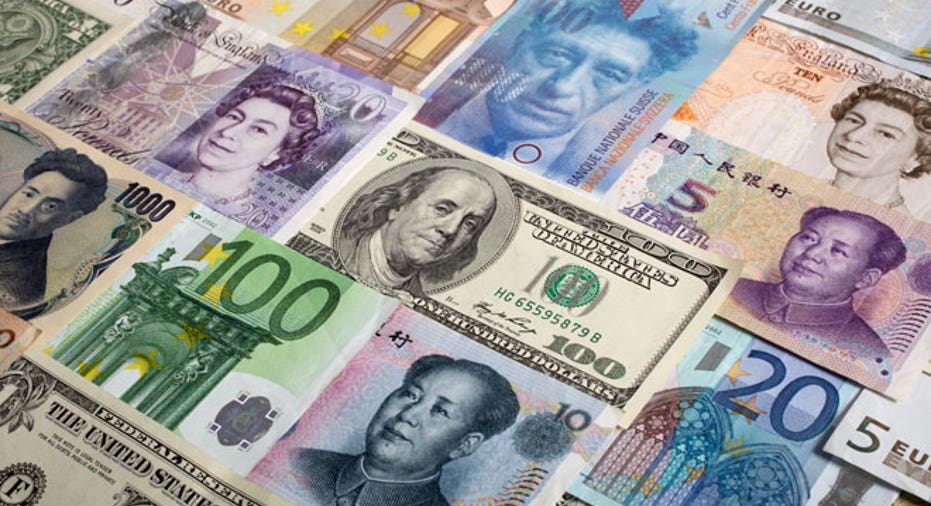French Bank Stress Weighs on Money Markets

Fears about the health of French banks intensified the scramble for U.S. dollars Thursday and drove up European banks' borrowing costs to levels not seen since the 2007-2009 global credit crisis.
Even bank-to-bank lending, which had been calm compared to other parts of the credit markets, is showing some strain due to the latest flare-up of the European debt crisis.
The spike in borrowing costs raises the question whether the current funding difficulties may foretell a repeat of the 2008 credit crisis, when vital arteries of global finance seized up.
Market indicators signaled traders believe a key measure of the cost for banks to borrow from one another could double by the end of the year.
The London interbank offered rate (LIBOR) on three-month dollars , the benchmark rate for $350 trillion worth of financial products worldwide, reached fresh four-month highs Thursday.
``That is purely a reflection of interbank funding, so it reflects sentiment on whether or not there could be a potential crisis in the funding markets. Every time there's a crisis that's usually what people look at first,'' said Kenneth Silliman, head of U.S. short-term rates trading with TD Securities in New York.
In the repo market, sources at two big Wall Street firms said they've raised their rates for some European banks, but are not cutting them off. Money market funds have been reducing exposure to French banks as well.
Meanwhile, French and other European banks lined up at the European Central Bank and borrowed more than 4 billion euros in emergency overnight cash, the highest amount since mid-May.
Three-month dollar LIBOR rose for a 13th straight session to 0.28617 percent, up from 4 basis points from a month ago.
LIBOR forward rates are implying the three-month rate will rise to 42 basis points by mid-September and 52 basis points by mid-December, Silliman said.
Worries over French banks' ability to raise money to meet their dollar-denominated obligations heightened after Reuters reported that one bank in Asia has cut credit lines to major French lenders. It said five other banks in Asia are reviewing trades and counterparty risk to French banks on worries over their exposure to the debt of peripheral euro-zone nations.
This week's spike in dollar loan costs has worried European government officials, fanning worries about whether the European debt predicament could spiral out of control.
French President Nicolas Sarkozy and German Chancellor Angela Merkel will discuss next Tuesday how to make the euro zone work more effectively in a bid to soothe investor jitters over Europe's ability to solve its sovereign debt crisis.
In an attempt to protect their money, nervous investors are piling into perceived less risky assets in Singapore and Switzerland, driving their short-term rates into negative territory, rather than making dollar-based loans at higher interest rates.
CHASING DOLLARS
Despite the billions of dollars of liquidity created by the U.S. Federal Reserve due to its ultra-loose monetary policy, banks and investors who own them are reluctant to part with them.
Those willing to lend their dollars do so mainly on an overnight basis as they wait for bold steps from European officials to contain the debt crisis, analysts said.
``The European money market is currently well insulated from day-to-day swings of the sovereign debt market, but the problem is confidence,'' said Christopher Clark, interest-rates strategist with ICAP in London.
To compensate for a dwindling pool of dollars available to them, European banks have depended on the foreign-exchange market in recent weeks. Since banks need cash for certain obligations denominated in a particular currency, they raise it wherever they can -- such as in euros -- and then swap it for dollars in the currency market.
In euro/dollar cross-currency trading, a bank can swap euro interest payments with a lender for dollars immediately and repay them with interest at a later date.
This euro/dollar three-month swap rate touched minus 95 basis points -- the highest since November 2008 during the global financial crisis -- and another sign of funding stress. If this cost of funding continues to rise, it will serve as another pressure point for banks trying to raise money.
``At the moment, many financial institutions appear to be well liquefied, but the foreign currency markets are starting to get into territories where it's becoming extremely expensive for foreign banks to convert their local currency into dollars,'' TD's Silliman said.
But it was still far below the peak of minus 300 basis points seen in the fourth quarter of 2008 when money markets froze after Lehman Brothers collapsed.
French and European banks still have access to the U.S. repurchase agreement market albeit lenders are charging them higher rates on overnight loans. (Additional reporting by Emily Flitter and Lauren LaCapra in New York; Kirsten Donovan and William James in London and Saikat Chatterjee in Hong Kong; Editing by Jan Paschal)



















